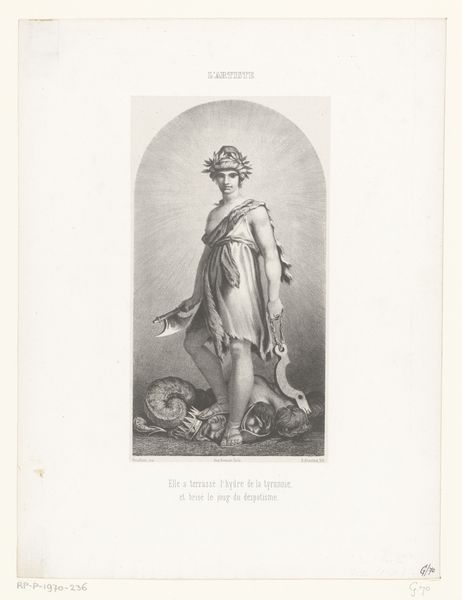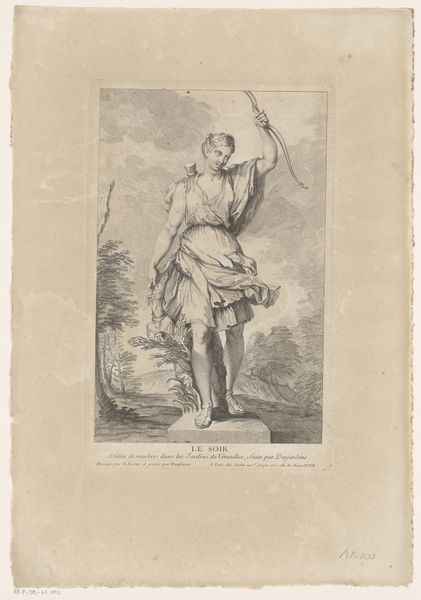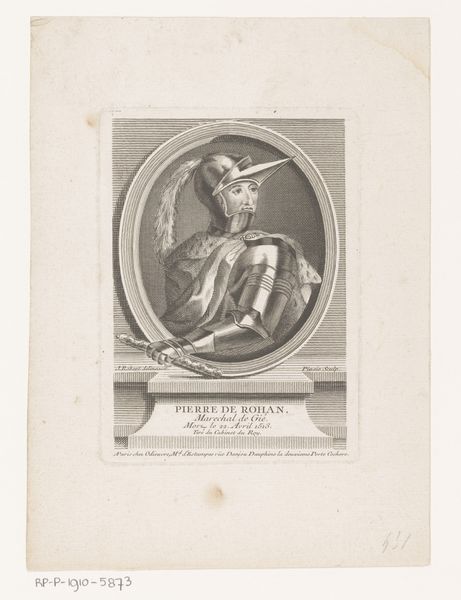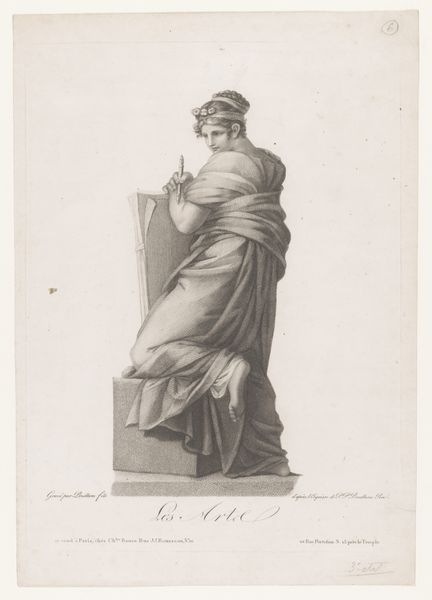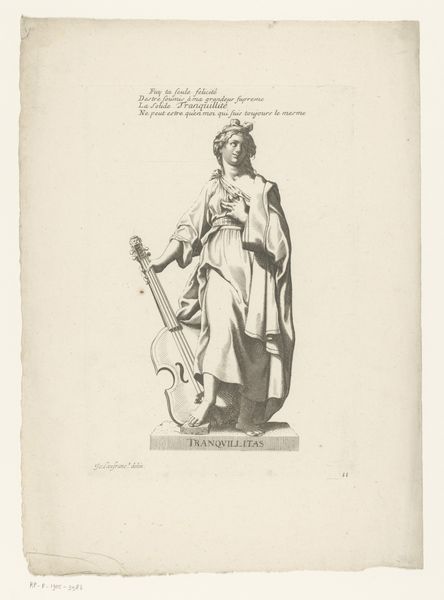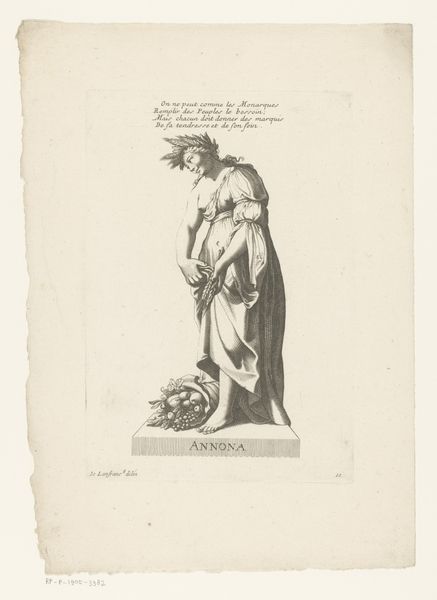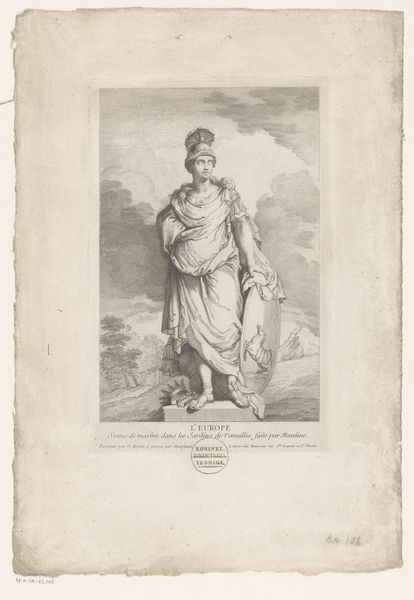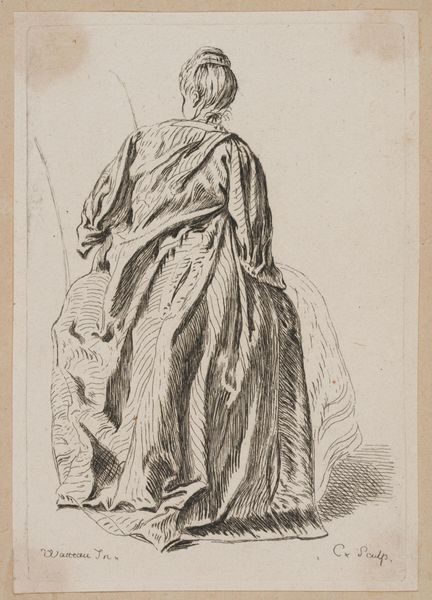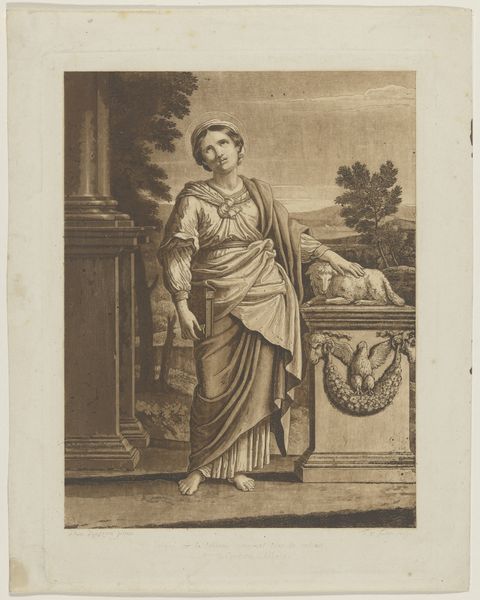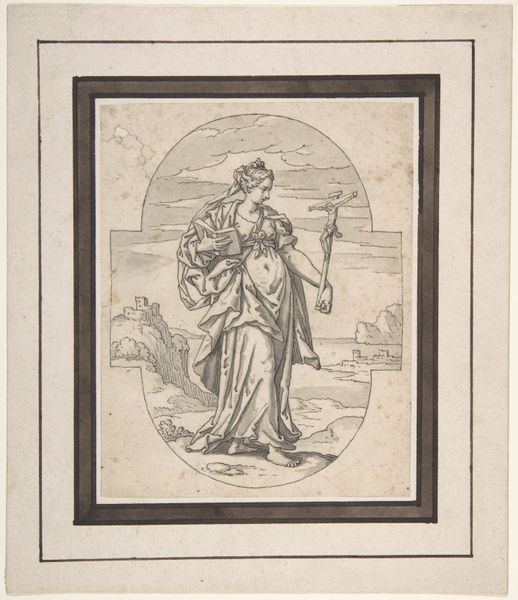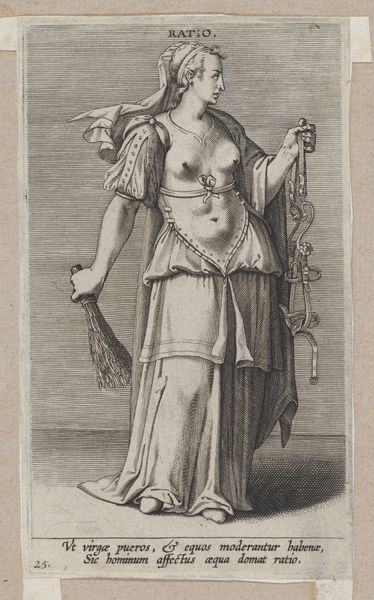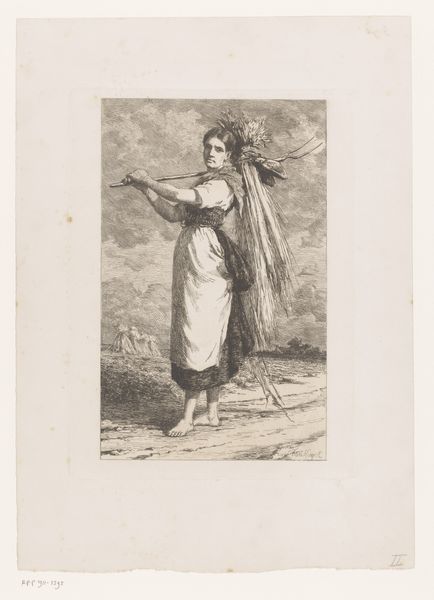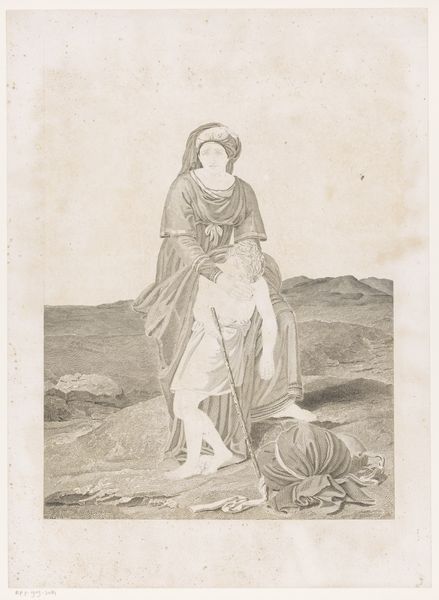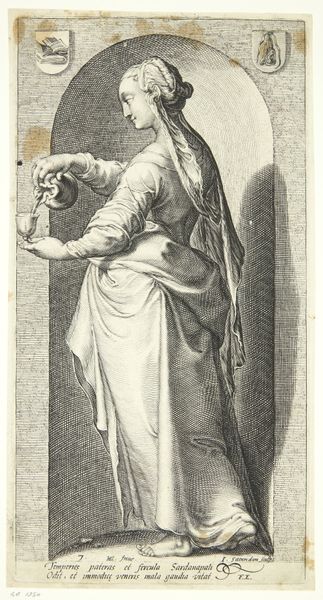
print, engraving
#
neoclacissism
#
allegory
# print
#
classical-realism
#
figuration
#
history-painting
#
engraving
Dimensions: height 212 mm, width 138 mm
Copyright: Rijks Museum: Open Domain
Editor: So, this print is titled "Vrijheid," or "Freedom," by Jacques Louis Copia, created around 1793. It strikes me as both powerful and delicate, the engraving capturing so much detail. What layers do you see when you look at this, beyond the surface depiction? Curator: Immediately, I see a work steeped in the socio-political turmoil of the late 18th century, a time of revolution and upheaval. Notice how Copia employs the allegorical figure of Liberty. She's not just an image of freedom; she’s a symbol loaded with meaning. What does her stance, the broken chains at her feet, and the ax in her hand suggest to you? Editor: That she's actively fought for and won her freedom? That it wasn’t just given to her? Curator: Exactly! And consider the context. This was created during the French Revolution, a period where the concept of liberty was being violently contested and redefined. This image isn't simply celebrating freedom, it’s advocating for it. It’s important to recognize the historical forces at play that shaped its creation. It prompts the question, who is this Liberty for, and at what cost? Editor: It makes you think about how loaded the idea of "freedom" can be, even today. The broken chains imply a formerly enslaved group; and the axe a means to cut those chains. Curator: Precisely! How do we, in our contemporary moment, view symbols like this that evoke power, resistance, and liberation, while carrying the weight of past oppressions? Do you feel this symbolism remains powerful and relevant today? Editor: I do, but I now also recognize the importance of critically examining the context from which these images arise and whose voices are amplified, and possibly, marginalized. Thanks for this historical, socio-political analysis! Curator: And thank you for prompting this intersectional exploration! I think this piece, even in its relatively small printed form, is actually rather monumental in what it reveals to us about history and enduring, contested ideals.
Comments
No comments
Be the first to comment and join the conversation on the ultimate creative platform.
